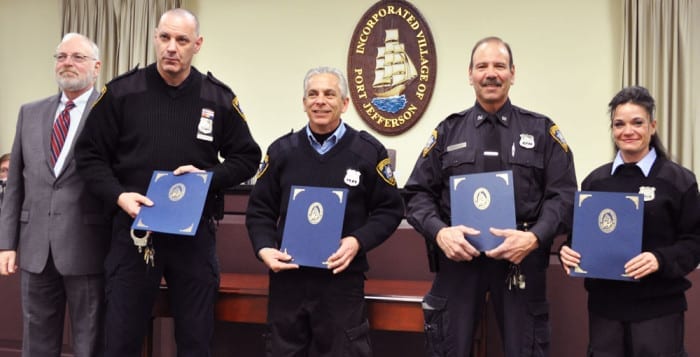By Sara-Megan Walsh
Blueprints and floor plans can be drawn up for the proposed Northport Inn, which overcame its first legal hurdle last week.
Northport Village trustees voted 3 to 1 to approve a code modification that paves the way for the construction of hotels and/or inns within the village’s downtown business district. Mayor George Doll and Trustees Jerry Maline and Damon McMullen voted in favor, and the sole dissenting vote was cast by Deputy Mayor Henry Tobin.
The village code approved Aug. 22 sets basic guidelines to regulate any future construction of a hotel and/or inn including maximum height and required parking spaces.
“There’s a tremendous need for lodging in this area” said Kevin O’Neill, managing director of John W. Engeman Theater. “Long Island is one of the most underserved locations in the United States for lodging.”

O’Neill, along with his business partner Richard Dolce, the theater’s producing artistic director, first presented a proposal for a 24-room Northport Inn and restaurant to be built at 225 Main Street in May, feet away from the Engeman.
“With the entrepreneurial juices that we both have, we were trying to figure out different ways that we can hedge the risk of a show being successful or not to help keep us afloat,” O’Neill said. “The vision came into play where we could create a restaurant that synergizes with the theater and an inn.”
The main inspiration for the proposal came from The American Hotel in Sag Harbor, according to O’Neill, in addition to several boutique lodgings that Dolce and O’Neill visited in Camden, Maine, last year. The partners said their goal is to bring first-class harborside lodging to the village along with a restaurant to serve meals and drinks to both overnight visitors and theatergoers.
“We have no intention of this becoming a glitzy Hampton-type thing,” O’Neill said. “We think it could be a charming harbor town like you have in Maine, but seven hours closer.”
Since the initial presentation in May, the main public criticism voiced by residents and the sole dissenting trustee, Tobin, has been what the potential impact the addition of the hotel and restaurant would have on the village’s parking and traffic congestion. Public comments were accepted by the village board from May 16 to July 18.
“We’re already stressed for parking on Main Street,” Tobin said. “I support the hotel, I support the restaurant. The question is what size restaurant will work within downtown Northport?”
The proposed plans as set forth call for a ground-level, 200-seat restaurant, according to O’Neill. Tobin said a parking and traffic study should have been conducted prior to the trustees’ vote to modify the village code to allow for the construction of the hotel/inn.
“We are taking a building that’s a blight upon the community and turning it into a landmark.”
—Kevin O’Neill
“[A parking and traffic study] would give us guidance on how many seats a restaurant could have and yet have minimal parking and traffic problems,” Tobin said. “We could use a study to determine the balance between the economic needs of the hotel and the logistical needs of the village and its residents.”
O’Neill stressed that he and Dolce are “very conscious” of parking concerns in Northport, citing that the village currently has approximately 600 public parking spaces, largely at the west end of the business district. He said it is their plan to convert the existing two parking lots, of 12 spaces each, currently on the property into a total of 54 parking spots. This is more than the number required under the village code passed on Aug. 22, according to O’Neill.
“We have done tireless research and we are confident that the parking we are providing, along with our valet that we’ve provided for the last 10 years, that we will have a seamless process to handle this,” he said.
The John W. Engeman Theater currently offers a valet parking service for its attendees, managing to service and park vehicles for 390 patrons up to twice a day for weekend matinees and evening performances.
A secondary issue raised by Tobin and residents was a concern that the 200-seat restaurant could be used for catering large events, causing a large influx of vehicular traffic at a time. However, O’Neill said he and Dolce have no interest in providing catering service for weddings, bat mitzvahs or other special occasions.
O’Neill said he hopes to have blueprints and a site plan drawn up for the proposed Northport Inn by Nov. 1 to present to the village, with the hopes of beginning construction in early spring 2018.
“We are taking a building that’s a blight upon the community and turning it into a landmark,” O’Neill said.
Both O’Neill and Dolce said they welcome any village residents with questions or concerns about their proposal to contact them directly for further discussion.









